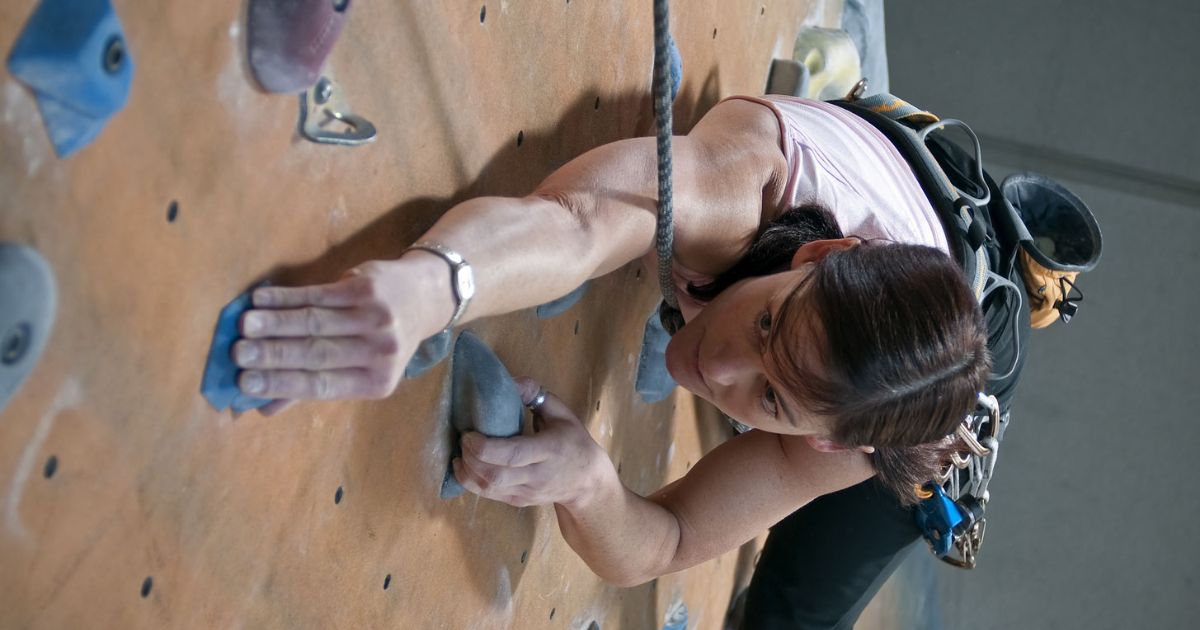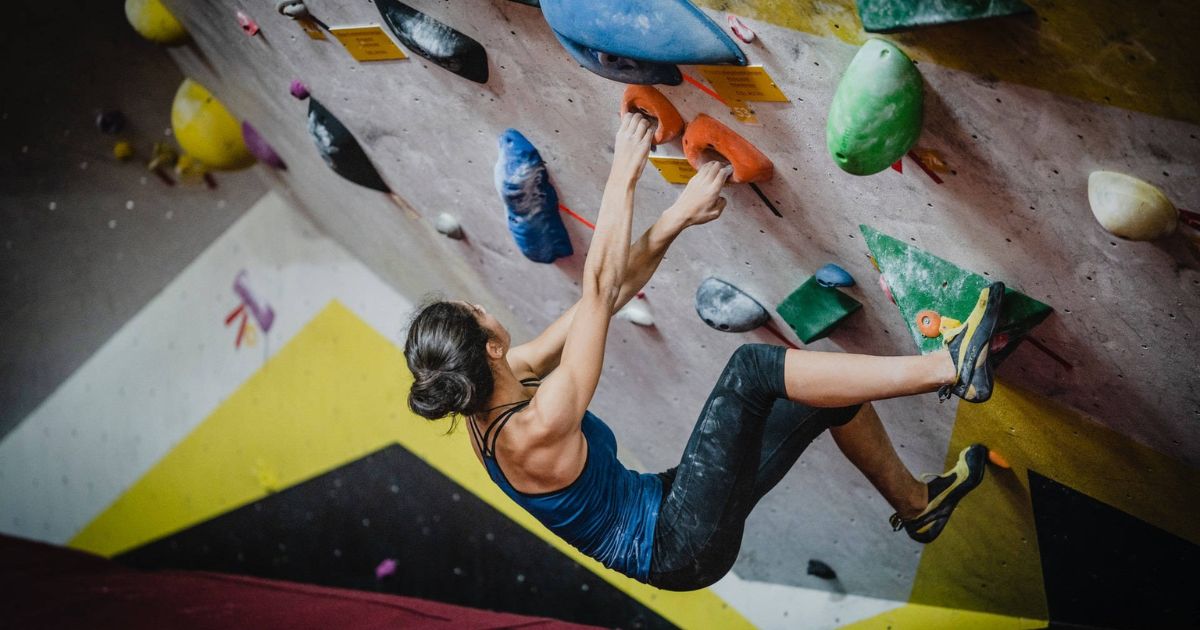Looking to venture into the exhilarating world of rock climbing gym ownership? Look no further. This article will provide you with the essential steps to start your own successful rock climbing gym. From conducting market research and securing funding to finding the perfect location and obtaining permits, we’ve got you covered. Get ready to harness your passion for climbing and turn it into a thriving business that attracts like-minded individuals seeking a sense of belonging in the world of rock climbing.
Key Takeaways
- Conduct thorough market research and analysis to understand the industry, potential customers, and market trends.
- Secure funding through personal savings, loans, crowdfunding, or partnerships with investors and create a comprehensive business plan.
- Choose a location that is easily accessible, has ample square footage, parking availability, and potential for future expansion.
- Obtain the necessary permits and insurance, prioritize safety and proper maintenance of equipment, and create engaging marketing strategies while setting up the facility with high-quality climbing walls and amenities.
Research and Assess the Market
One must conduct thorough market research and analysis before starting a rock climbing gym. Market research involves gathering relevant data and information about the industry, potential customers, and market trends. It helps entrepreneurs make informed decisions and develop strategies that align with the needs and preferences of their target audience. When conducting market research for a rock climbing gym, it is essential to analyze the current demand for indoor climbing facilities and identify any gaps in the market.
This includes studying the demographics of potential customers, such as age, income, and location. Additionally, competitor analysis is crucial to understand the strengths and weaknesses of existing gyms in the area. By studying their offerings, pricing, and customer experience, entrepreneurs can identify opportunities for differentiation and create a unique value proposition. Conducting thorough market research and competitor analysis lays the foundation for a successful rock climbing gym. With this information, entrepreneurs can secure funding and create a business plan that addresses the specific needs and desires of their target audience.
Secure Funding and Create a Business Plan
After conducting thorough market research and competitor analysis, it is essential to secure funding and create a business plan for your rock climbing gym. Funding is crucial to cover the costs of equipment, facility rental, staff salaries, marketing, and other operational expenses. There are several funding sources you can explore, including personal savings, loans from financial institutions, crowdfunding campaigns, and partnerships with investors.
It is important to consider the amount of funding you need and the terms and conditions associated with each funding option. Creating a comprehensive business plan is equally important as it outlines your goals, strategies, target market, financial projections, and marketing plans. You can find business plan templates online that can guide you through the process and ensure that all the necessary components are included. A well-thought-out business plan will not only attract potential investors but also provide a roadmap for the success of your rock climbing gym.
Find a Suitable Location for Your Gym
Once funding and a business plan have been secured, the next crucial step in starting a rock climbing gym is finding a suitable location for your facility. The location you choose will greatly impact the success of your gym, as it needs to be easily accessible for your target audience of climbers. Look for a space that has ample square footage to accommodate climbing walls, safety equipment, and other necessary amenities.
Additionally, consider factors such as parking availability, proximity to public transportation, and the potential for expansion in the future. Remember, your goal is to create a welcoming and inclusive environment where climbers can feel a sense of belonging. Finding the right location is key to making this vision a reality. Next, we will discuss how to obtain the necessary permits and insurance to ensure the safety and legality of your gym.
Obtain Necessary Permits and Insurance
When starting a rock climbing gym, obtaining the necessary permits and insurance is crucial to ensure legal compliance and protect your business. Depending on your location, there may be specific legal requirements for obtaining permits, such as zoning regulations or building codes. Additionally, liability insurance is essential to protect against potential accidents and injuries that may occur within your gym.
Legal Requirements for Permits
To establish a rock climbing gym, it is essential to obtain the necessary permits and insurance to ensure compliance with legal requirements. This step is crucial to ensure the safety of both the climbers and the business owner. The permit application process usually involves submitting legal documentation that demonstrates your gym meets all the necessary safety standards and regulations.
Here is a table highlighting some of the permits and insurance policies you may need to consider:
| Permits | Insurance Policies | Other Requirements |
|---|---|---|
| Building Permit | General Liability Insurance | Safety Inspections |
| Zoning Permit | Professional Liability Insurance | Business License |
| Health and Safety Permit | Workers’ Compensation Insurance | Waivers and Release Forms |
| Environmental Permit | Property Insurance | CPR and First Aid Certification |
| Fire Safety Permit | Equipment Insurance | Staff Training on Emergency Procedures |
Obtaining these permits and insurance policies will not only ensure the legality of your rock climbing gym but also provide protection for your business, employees, and customers. Remember to consult with local authorities and insurance professionals to ensure you meet all the necessary requirements.
Importance of Liability Insurance
Liability insurance is a crucial component of starting a rock climbing gym as it provides essential protection for both the business owner and the climbers. It ensures that in the event of accidents or injuries, the gym is financially covered and can continue to operate smoothly. Here are three reasons why liability insurance is of utmost importance:
- Insurance coverage: Liability insurance provides coverage for any legal claims or lawsuits that may arise due to accidents or injuries that occur on the premises. It safeguards the gym from financial losses and potential bankruptcy.
- Risk management: Running a rock climbing gym involves inherent risks. Liability insurance helps manage these risks by providing financial protection in case of accidents, injuries, or property damage. It allows the gym to focus on providing a safe and enjoyable climbing experience without the constant worry of potential liabilities.
- Peace of mind: By obtaining liability insurance, both the business owner and climbers can have peace of mind knowing that they are protected in case of any unforeseen incidents. It fosters a sense of belonging and trust within the climbing community, attracting more climbers to the gym.
Purchase or Lease Climbing Equipment
When starting a rock climbing gym, one of the key decisions to make is whether to purchase or lease the climbing equipment. This decision involves considering factors such as the upfront cost, long-term expenses, and the availability of quality equipment. Additionally, it is important to prioritize safety and ensure proper maintenance of the equipment to provide a safe and enjoyable climbing experience for customers.
Buying Vs. Renting
One crucial decision to make when starting a rock climbing gym is whether to purchase or lease climbing equipment. Each option has its advantages and financial implications that need to be carefully considered. Here are some factors to keep in mind when deciding whether to buy or rent equipment:
- Cost: Buying equipment upfront can be expensive, but it may save you money in the long run compared to paying monthly lease fees.
- Flexibility: Buying equipment gives you the freedom to customize and maintain it according to your gym’s needs, whereas renting may limit your options.
- Quality and Safety: Purchasing your own equipment allows you to ensure its quality and safety standards, which is vital for the well-being of your climbers.
Considering these factors will help you make an informed decision about whether to buy or lease climbing equipment. Now let’s move on to the next section, where we will discuss cost considerations when starting a rock climbing gym.
Cost Considerations
To fully evaluate the cost considerations of starting a rock climbing gym, it is imperative to delve into the decision-making process between purchasing or leasing climbing equipment. Both options have their pros and cons, and the choice ultimately depends on your budget planning and long-term goals.
A cost analysis can help determine which option is more financially viable for your business. Purchasing climbing equipment upfront requires a significant initial investment but may prove cost-effective in the long run. On the other hand, leasing allows you to conserve capital and allocate funds to other areas of your gym, but it comes with ongoing rental fees.
Consider the following table for a clearer picture:
| Purchasing Equipment | Leasing Equipment | |
|---|---|---|
| Strategy | Description | |
| Social Media Campaigns | Create engaging content and promotions on platforms like Facebook and Instagram to reach and connect with climbers | |
| Influencer Partnerships | Collaborate with popular climbers or fitness influencers to promote your gym and attract their followers | |
| Local Community Events | Host or participate in local events, competitions, or workshops to showcase your gym and build relationships |
Frequently Asked Questions
What Are the Specific Safety Measures and Protocols That Need to Be Followed in a Rock Climbing Gym?
When operating a rock climbing gym, it is crucial to prioritize safety measures and protocols to ensure the well-being of staff and customers. Implementing daily safety checks, providing proper training, and addressing common challenges are essential for rock climbing gym owners to minimize liabilities and create a safe and engaging environment to retain customers.
How Can I Effectively Manage the Daily Operations and Staff of a Rock Climbing Gym?
Effective staff management and daily operations are crucial for running a successful rock climbing gym. This involves hiring qualified personnel, providing adequate training, implementing efficient scheduling and communication systems, and ensuring a safe and enjoyable experience for both staff and customers.
What Are Some Common Challenges or Obstacles Faced by Rock Climbing Gym Owners, and How Can They Be Overcome?
Overcoming challenges is a crucial aspect of business growth for rock climbing gym owners. They often face obstacles such as high start-up costs, competition, and maintaining customer interest. However, with strategic planning, targeted marketing, and a strong community focus, these challenges can be overcome successfully.
Are There Any Legal Considerations or Liabilities That I Should Be Aware of as a Rock Climbing Gym Owner?
As a rock climbing gym owner, it is crucial to be aware of legal considerations and liabilities. Implementing safety measures, protocols, and thorough staff management are essential for daily operations. Engaging customers and ensuring their safety is paramount for customer retention.
What Are Some Creative Ways to Engage and Retain Customers in a Rock Climbing Gym?
Customer engagement and retention in a rock climbing gym can be enhanced through various creative strategies. These may include organizing themed climbing events, offering personalized training programs, creating a supportive and inclusive community, and implementing loyalty programs to reward loyal customers.
Conclusion
Starting a rock climbing gym requires thorough research and planning. By assessing the market, securing funding, and creating a business plan, you can lay a solid foundation for success. Finding a suitable location, obtaining necessary permits and insurance, and purchasing or leasing climbing equipment are essential steps to set up your gym. Lastly, effective marketing strategies will help attract customers. While starting a rock climbing gym may seem challenging, with passion, knowledge, and determination, you can overcome any obstacles and create a thriving business.










